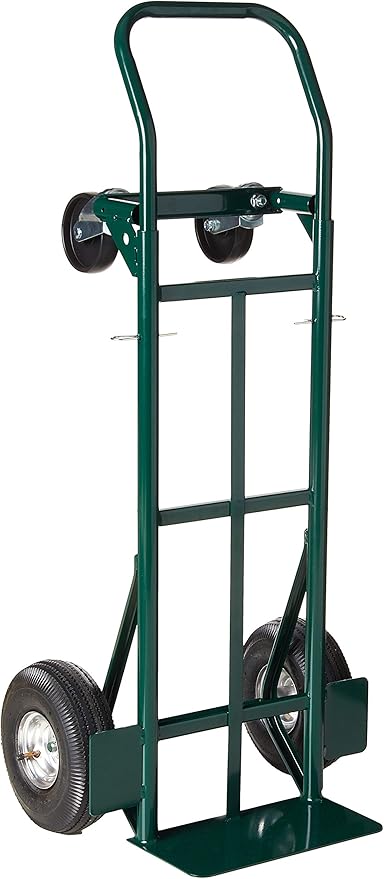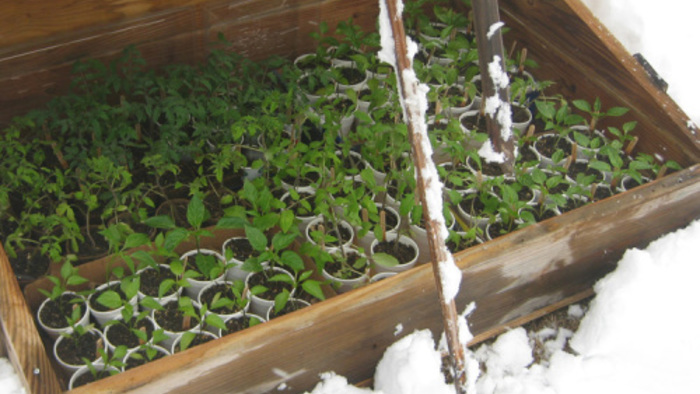
Photo/Illustration: Marc Vassallo
My broccoli plants were driving me crazy. One by one, the sturdy seedlings would keel over and die. Out of every
dozen, only five or six made it to harvest. The culprit, I decided, was root maggot, the larva of a fly that lays its eggs on broccoli leaves. A gardener friend suggested covering my broccoli bed with a fabric called Reemay. I was skeptical, but I gave it a try the following spring, stretching the fabric over wire hoops to form a tunnel. I kept a garden diary in those days, and the entry for June 20 reads, “Reemay prevented root maggot from attacking broccoli. 100 percent crop!” It was no fluke. Every broccoli I’ve planted under a row-cover tunnel since that spring has survived to succulent adulthood, often maturing faster than normal. And I have become not only a convert of the Reemay tunnel but also a missionary.
Use wire to hold the tunnel up and rocks to hold it down

Photo/Illustration: Marc Vassallo
A brand name that has become generic, Reemay is just one of a number of row covers on the market. Some, like Reemay, are made from spun-bonded polyester; others are made from spun-bonded polypropylene. Their fibers are not woven but pressed together. Nevertheless, they are strong and so light that a square yard weighs a mere
½ ounce. These fabrics are ideal for covering seeds or plants because they are porous to air and water and 85 percent transparent. Sunlight penetrates a row cover to warm the air and soil, creating a benign microclimate for germination and growth. All floating row covers will take the edge off a frost, but to play it safe, especially with heat-loving transplants, I watch the forecast and add extra cover when the prediction is ominous.

Photo/Illustration: Marc Vassallo

Photo/Illustration: Marc Vassallo
I originally used Reemay itself, but now I buy whichever brand is available at my local garden center. Row covers can also be purchased from many mail-order companies. The fabrics typically come in lengths of
20 feet, 50 feet, or 100 feet, and in widths of 5½ feet or 12 feet. If you’re a kitchen gardener, you’ll find the narrow width more suitable than the broad. Row covers are not cheap, but with care, they are reusable for three or more seasons.
If your garden is sheltered from the wind, you can apply a row cover without supports. You’ll need rocks to hold down the edges, but the plants themselves will support the fabric, hence the term “floating row cover.” But an unsupported row cover can seriously abrade the plants under it if the wind shifts it around too much. My garden is interminably windy, so I devised a way to make a simple row-cover tunnel.

I use 5½-foot-wide fabric, which I cut to the length of the bed plus an extra 4 feet so that I have some slack to gather at each end. To hold down the fabric, I use fist-size rocks. A tunnel takes a lot of them—at least 50 per 15-foot-long bed. Rocks, by the way, make more sense than pins, which cost money and puncture the fabric.
I could buy hoops to hold the row cover up, but I find it less expensive to make them from 12-gauge galvanized wire. This single-strand wire comes in coils at hardware stores or fence suppliers. One pound of 12-gauge wire makes six 60-inch-long hoops. I cut the wire into 60-inch lengths, then bend each length around a 5-gallon plastic bucket to make a U shape. I poke the hoops 6 inches into the soil at 20- to 24-inch intervals. The hoops hold up a row cover 28 inches wide, with 16 inches of headroom for the plants.
I put all the fabric on one side of the hoops, and pin down one edge with rocks set 6 to 8 inches apart. Then I pull the fabric snugly over the hoops, gather the surplus on the other side, and hold it down with more rocks. When I gather up the surplus fabric at each end, I push the end hoops inward slightly to create tension.
Keep the tunnel intact until the weather warms

Photo/Illustration: Marc Vassallo
Despite the tunnel, I still have to cope with weeds, which grow with tropical exuberance under the cover, and with underground pests, but I no longer worry about flying and leaping insects because they can’t penetrate a row cover. Rabbits and woodchucks could chew through, but they are too dim to recognize the opportunity. In a row-cover tunnel, my cold-crop transplants get a significant boost, and my warm-weather transplants can be set out two weeks earlier than usual.
Except when I pull back the fabric to weed or water, my transplants remain under cover as they grow. There is no fixed time when I remove the fabric and take down the hoops. When the broccoli, cabbage, and cauliflower begin to push against the sides and tops of the tunnel, they are ready to make it on their own. With spinach, I cast off one side, weed and thin, then cover again until the remaining plants mature. I lift the cover from tomatoes, peppers, eggplants, and other warm-weather crops in late spring; frost no longer threatens, and now the plants are strapping adolescents.
When the fabric is no longer needed, I check it over, mend holes and tears with duct tape, clean off any mud, roll it up, stuff it in a bag, and store it out of the way of mice. I’m sure I could construct row-cover tunnels again in fall to extend the other end of the season, but my plants are well played out by then—and, frankly, so am I.
Fine Gardening Recommended Products

Razor-Back Potato/Refuse Hook
Fine Gardening receives a commission for items purchased through links on this site, including Amazon Associates and other affiliate advertising programs.

Harper Super Steel 700-lb. Platform Hand Truck
Fine Gardening receives a commission for items purchased through links on this site, including Amazon Associates and other affiliate advertising programs.

Plant Covers Freeze Protection 10 ft x 30 ft Floating Row Cover 0.9oz/yd²
Fine Gardening receives a commission for items purchased through links on this site, including Amazon Associates and other affiliate advertising programs.


















Comments
Log in or create an account to post a comment.
Sign up Log in